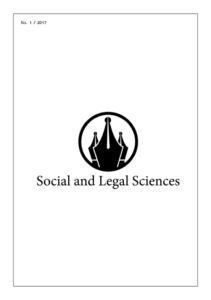Cash flow optimization and accounting in the enterprise
Cash flow optimization and accounting in the enterprise
Author(s): Svitlana SemenovaSubject(s): Accounting - Business Administration
Published by: Lukas Varhol
Keywords: cash flows; optimization; accounting; cash flow statement
Summary/Abstract: Foreign practice of financial management is increasingly drawn to the characteristics of cash flows in the assessment of the enterprise. The net cash flow is the objective result of the management, while theprofit depends on the subjective approach of the adopted accounting policy. The financial situation of manyenterprises in Ukraine is unsatisfactory. One of the ways to improve it is to optimize cash flows through balance and coherence between their individual types, to achieve a growth in net cash flow, which will increase solvency, financial sustainability and opportunities for self-financing of enterprises. According to the existing approach, cash flow optimization is viewed from the point of view of their time synchronization and balance in volume, before which cash flow equalization, maximization of net cash flow or provision of its target value. It is proved that most models of optimization of the balance of monetary assets are based on thedefinition of the minimum limit, but do not take into account the actual level of solvency of the enterprise, theobjective lack of funds and circumstances associated with it. Moreover, the net cash flow is directly affectedby the cash balances, rather than separately the amount of proceeds or expenditures. Therefore, optimization ofcash flows should be based on interrelated criteria. A model of cash flow optimization is proposed thatcombines a static approach to the formation of the optimum balance of monetary assets and a dynamicapproach to cash flow management. The necessity of optimization of cash flows of the enterprise is proved onthe basis of interrelated criteria: 1) formation of the optimal balance of monetary assets; 2) achievement of thetarget value of the net cash flow; 3) balance of cash flows by type of activity; 4) maximizing net cash flowfrom operating activities. The proposed model allows to accumulate the necessary amount of monetary assetsduring periods of high business activity and direct them in such a way that in the period of the shortage offunds, planned and necessary payments are made. Formation of the insurance balance of monetary assetswould allow, on terms of self-financing, cover the period of shortage of funds and obtain additional incomefrom the temporary placement of insurance and compensatory funds on the deposit account. Under suchconditions an enterprise can avoid the costs of paying fines and penalties, and plan their calculations.Implementation of the proposed approach allows to improve the efficiency of cash flows from operatingactivities. It is proved that in determining the optimal balance of funds, it is necessary to reconcile data on thenature and volume of income and expenditure of funds, the balance of funds at the beginning and end of theperiod, the level of solvency of the enterprise. It is taken into account that the balance of funds is shown in theamount of availability at the reporting date, and cash flow - for the period (year, quarter, month, day), the netcash flow directly affects the balance of cash assets. The target criterion for optimizing cash flows is themaximization of the net cash flow from operating activities to ensure the development of the enterprise on thebasis of self-financing. The achievement of the optimum balance of monetary assets is ensured by obtainingthe target growth of net cash flow, which should be formed predominantly at the expense of operating activity.In order to maximize net cash flow from operating activities, the necessity to allocate its components for theinput and output cash flows by types of activity and main directions of income and expenditure of funds issubstantiated. In accordance with this, a form of cash flow statement is drawn up on the example of watertransport enterprises, which meets the information needs of optimizing cash flows
Journal: Social and Legal Sciences
- Issue Year: 1/2018
- Issue No: 2
- Page Range: 57-69
- Page Count: 13
- Language: English

